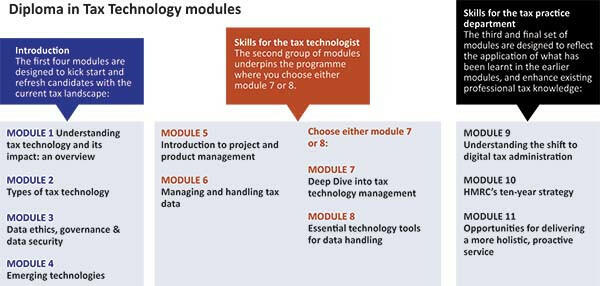Qualifications: CIOT introduces the new Diploma in Tax Technology
The new distance learning programme is designed to give candidates a solid grounding in the use or administration of tax technology.
The future of tax is digital. The tax landscape is changing and advances in tax technology are increasing efficiencies. Tax advisers can work faster, more accurately and respond better to regulatory and reporting changes. It’s critical that tax professionals keep up with the rapid pace of change and this is why we are delighted to launch our first ever digitally focused qualification.
The Diploma in Tax Technology (DITT) launched via webinar on 21 November, with a debate about the tax tech environment, proving to be a popular subject, attracting nearly 1,500 attendees. Aimed at existing tax professionals, systems specialists aligned to tax, those working in the tax software and tax tech industry, and tax professionals returning to work after a career break, as well as those looking to join the tax tech profession, the syllabus for the DITT is set at educational Level 4. It is available online and on demand.
Tolley Academy has been chosen as the course host by CIOT to deliver this distance learning course and facilitate the assessments. There are eleven modules with two routes which can be followed, depending on whether the candidate wishes to get a solid grounding in the use of technology or in the administration of technology. The modules are a mix of webinars, reading material and questions to practice.
The syllabus has been designed as a broad-based instructional programme to give candidates a wide foundation in this area. Assessments are inbuilt to the programme, and it is necessary to pass them in order. Technology is a fast-moving discipline, and the modules will be reviewed and updated annually to ensure the qualification remains highly relevant.
Skills and recognition in tax technology
The Diploma, as shown in the diagram, consists of three layers of learning:
- Modules 1 to 4 are designed to kickstart and/or refresh candidates with the current tax landscape.
- Modules 5 to 8 underpin the programme, where you choose either Route 1 (Deep dive into technology management) or Route 2 (Essential technology tools for data handling).
- Modules 9 to 11 are made up of the Making Tax Digital (MTD) modules, the syllabus for which is designed to reflect the application of what has been learnt in the earlier modules, and existing professional tax knowledge.
Learning outcomes
Learning outcomes have been developed for each module.
The overall learning outcome that candidates can expect to gain following the course is to be able to converse confidently about tax technology with experts, and to be able to work within tax technology project teams (although not, at this level, to lead such a project). Candidates will also know how to research and assimilate relevant data.
Gaining the Diploma will help to ensure that tax professionals are better equipped to provide relevant tax practice and governance updates for their clients, and will open the door to a tax digital future.
The DITT provides learning and certification for tax professionals facing the challenge of digitalisation in taxation.
To find out more about the DITT programme, learning and details on how to register visit: www.tax.org.uk/ditt



